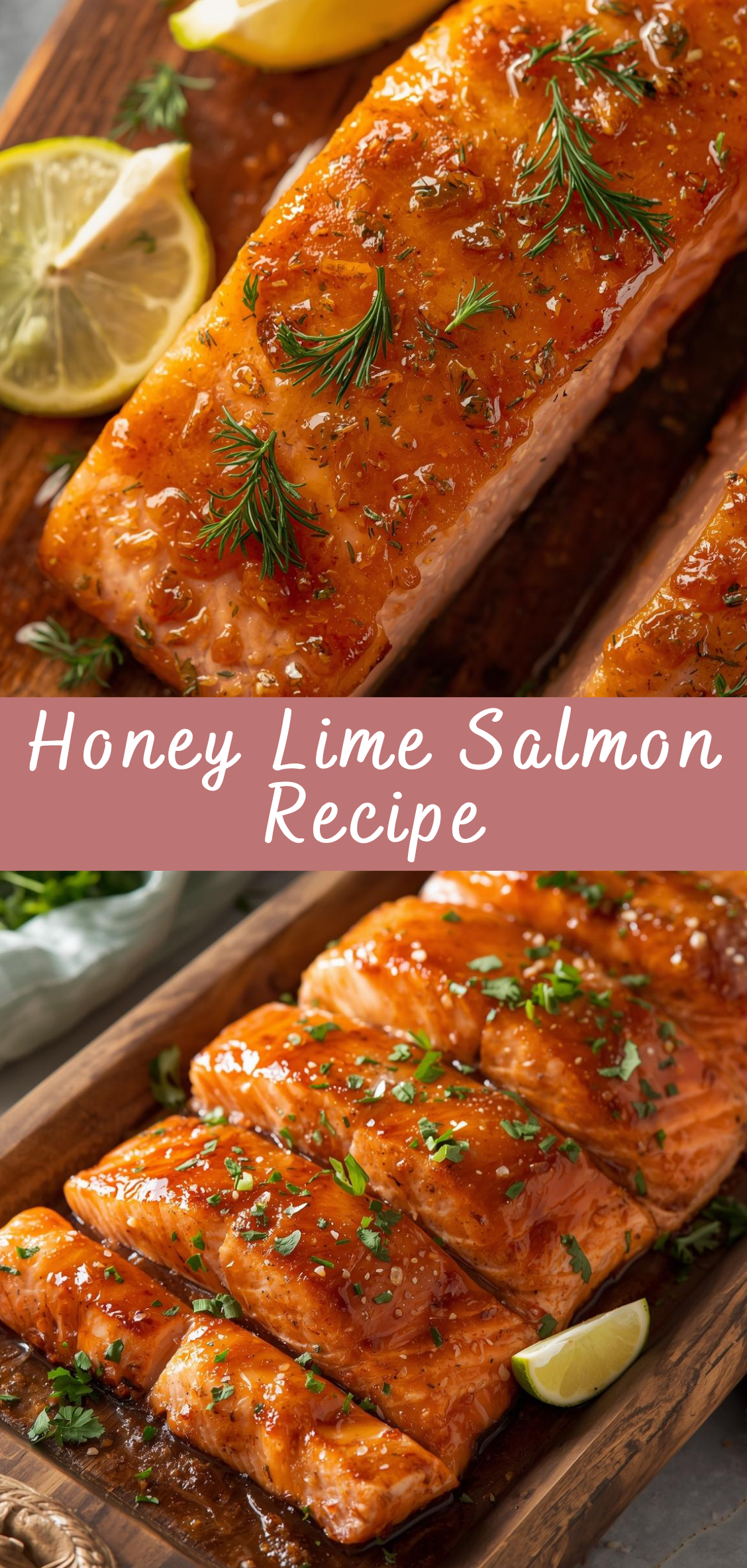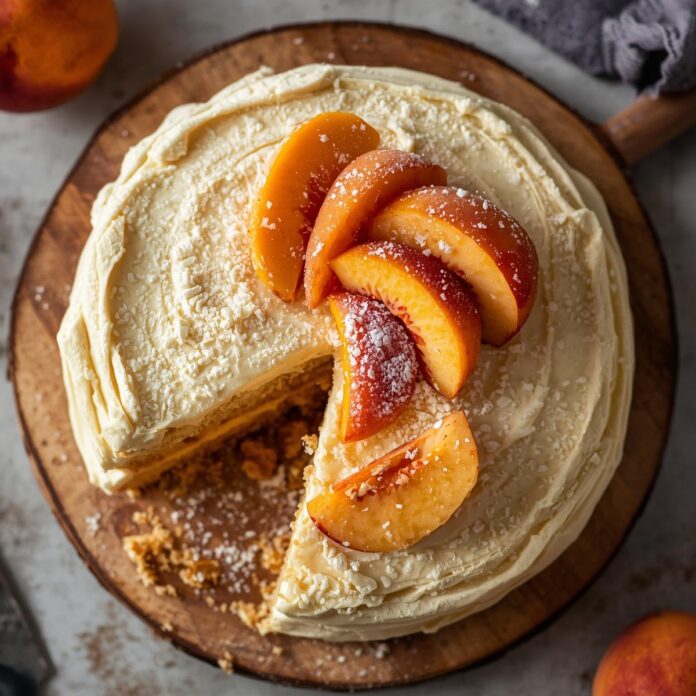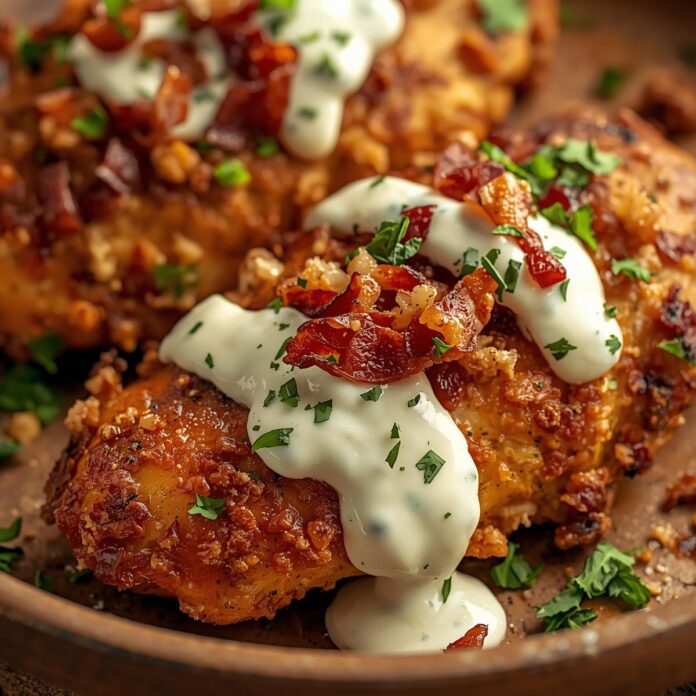Honey Lime Salmon: A Perfect Harmony of Sweet, Tangy, and Savory Flavors
Few dishes strike the perfect balance between simplicity, elegance, and nutritional excellence quite like Honey Lime Salmon. This recipe, though seemingly straightforward, captures the very essence of what makes salmon one of the most beloved fish in global cuisine — its buttery texture, delicate flavor, and remarkable versatility. When paired with the bright acidity of lime and the natural sweetness of honey, salmon transforms into a dish that is both comforting and sophisticated, equally at home on a weekday dinner table or as the centerpiece of a refined gathering.

The combination of honey and lime may seem modest at first glance, but it represents a fundamental principle of great cooking: balance. The honey contributes a subtle sweetness that caramelizes beautifully under heat, coating the salmon in a glossy, amber glaze that teases the senses before the first bite. Meanwhile, the lime provides a lively contrast — a tangy sharpness that cuts through the richness of the fish, awakening the palate and enhancing every layer of flavor. Together, these two ingredients form a culinary duet that is as harmonious as it is memorable.
Beyond its flavor profile, Honey Lime Salmon also embodies a modern approach to cooking that values both health and pleasure. Salmon is widely regarded as one of the most nutritious types of seafood available, offering high-quality protein, essential omega-3 fatty acids, and a wealth of vitamins and minerals. When prepared thoughtfully, it nourishes the body without compromising on taste. The honey and lime not only add dynamic flavor but also contribute antioxidants, natural enzymes, and vitamin C — making this dish a celebration of wholesome, vibrant eating.
In this recipe guide, we will explore Honey Lime Salmon in depth — from the science of flavor pairing to the art of cooking salmon to perfection. You will learn how to select the best fillets, how to prepare the glaze for maximum caramelization, and how to achieve that perfect balance between a tender, flaky interior and a slightly crisp, flavorful crust. We will also discuss variations of the dish, including grilled, baked, and pan-seared methods, each offering unique textures and aromas. To complement the main course, we will suggest side dishes and wine pairings that elevate the entire dining experience, as well as provide tips for presentation and meal planning.
Whether you are an experienced home cook seeking to refine your seafood repertoire or a beginner eager to create a restaurant-quality meal in your own kitchen, this comprehensive recipe will guide you step by step through the process. By the end, you will not only have mastered a timeless dish but also gained deeper insight into the delicate balance of flavor and technique that defines exceptional cooking.
Honey Lime Salmon is more than just a recipe — it is a culinary expression of contrast and harmony, a dish that captures the freshness of the sea, the brightness of citrus, and the comfort of home.
Instructions
Cooking Honey Lime Salmon is not merely about combining ingredients; it’s about understanding how heat, time, and texture come together to form a perfect bite. To achieve the best possible results, it’s crucial to respect the natural qualities of salmon — its tenderness, its rich fat content, and its mild yet distinctive flavor. The following instructions guide you through the entire process, from preparation to plating, ensuring that every stage enhances the final outcome.
Step 1: Preparing the Salmon
1. Choosing the right cut
Begin with high-quality salmon fillets, ideally fresh rather than frozen. The fillets should be about one inch thick, with firm flesh and a vibrant orange or pink color depending on the species. Avoid fillets with a dull hue or any strong fishy odor, as these are indicators of age. If possible, select skin-on fillets — the skin acts as a protective barrier during cooking, preventing moisture loss and helping the fish maintain its shape.
2. Trimming and portioning
If your fillets are uneven in thickness, use a sharp knife to trim them into portions that cook evenly. Consistency in thickness ensures that the fish will cook uniformly and prevents one end from becoming overdone while the other remains undercooked.
3. Patting dry
Before seasoning, gently pat each piece of salmon dry with paper towels. Moisture on the surface will create steam in the pan or oven, which interferes with browning and caramelization. A dry surface ensures a golden crust and helps the glaze adhere properly.
Step 2: Making the Honey Lime Marinade
1. Ingredients for the marinade
In a small mixing bowl, combine the following:
-
3 tablespoons of honey (preferably raw or local honey for depth of flavor)
-
2 tablespoons of freshly squeezed lime juice
-
1 teaspoon of lime zest (adds aromatic brightness)
-
2 cloves of garlic, finely minced or pressed
-
1 tablespoon of olive oil or melted butter (for richness and smooth texture)
-
1 teaspoon of soy sauce or tamari (optional, adds umami and balance)
-
½ teaspoon of salt and a pinch of freshly ground black pepper
2. Whisking and emulsifying
Use a small whisk or fork to blend the ingredients until the honey fully dissolves and the mixture thickens slightly. The oil helps emulsify the glaze, ensuring even coating on the fish. Taste the marinade — it should be sweet with a lively tang and a faint savory undertone. Adjust the proportions as needed: add more honey for sweetness, more lime juice for acidity, or a few drops of soy sauce for depth.
Step 3: Marinating the Salmon
1. Coating the fillets
Place the salmon fillets in a shallow dish or resealable plastic bag. Pour about two-thirds of the marinade over the fish, reserving the remaining third for later glazing. Gently turn the fillets to ensure all sides are coated.
2. Marination time
Cover and refrigerate for at least 20–30 minutes, but not more than 1 hour. The lime juice is acidic and can begin to “cook” the surface of the fish if left too long, resulting in a mushy texture. The brief marination period is enough to allow the honey, garlic, and lime to penetrate the surface without compromising the salmon’s integrity.
3. Bringing to room temperature
Before cooking, remove the salmon from the refrigerator and allow it to rest at room temperature for about 10–15 minutes. This step ensures even cooking — cold salmon placed directly in a hot pan or oven tends to cook unevenly, with the exterior overdone and the center undercooked.
Step 4: Cooking Methods
There are several excellent ways to cook Honey Lime Salmon, each producing a distinct flavor and texture. Choose the method that best suits your equipment, time, and desired outcome.
Method A: Pan-Seared Honey Lime Salmon
Pan-searing is ideal for achieving a beautifully caramelized crust and a tender, flaky interior. It’s quick, dramatic, and perfect for when you want a restaurant-quality finish at home.
1. Preheating the pan
Use a heavy-bottomed skillet or cast-iron pan to ensure even heat distribution. Heat the pan over medium-high heat until it is hot but not smoking. Add a thin layer of olive oil or butter.
2. Placing the salmon
Lay the fillets skin-side down (if using skin-on fish) in the hot pan. The skin will crisp and release naturally when it’s ready to flip. Do not move the fillets immediately; allow them to sear undisturbed for 4–5 minutes.
3. Basting with marinade
As the salmon cooks, use a spoon to drizzle a small amount of the reserved marinade over the top. This enhances the glaze and deepens the color.
4. Flipping carefully
Using a thin spatula, gently flip each fillet. Cook for another 3–4 minutes, depending on thickness, until the flesh flakes easily but remains moist at the center. You should see the honey caramelizing into a golden glaze, bubbling gently around the edges.
5. Resting
Once cooked, remove the fillets from the pan and let them rest for 2–3 minutes before serving. Resting allows the juices to redistribute, ensuring a tender and flavorful bite.
Method B: Oven-Baked Honey Lime Salmon
Baking is the most forgiving method, ideal for larger portions or when serving multiple guests. It results in a slightly softer texture and requires minimal hands-on attention.
1. Preheating the oven
Preheat your oven to 400°F (200°C). Line a baking sheet with parchment paper or foil for easy cleanup.
2. Arranging the fillets
Place the salmon fillets on the prepared baking sheet, skin-side down. Brush each piece generously with the remaining marinade, coating evenly.
3. Baking time
Bake for 12–15 minutes, depending on the thickness of the fillets. As a rule of thumb, allow 10 minutes of cooking time per inch of thickness. The honey will bubble and caramelize, forming a glossy layer over the top.
4. Optional broil finish
For a slightly crisp top, switch the oven to the broil setting for the final 1–2 minutes. Keep a close watch to prevent burning — honey burns quickly due to its high sugar content.
Method C: Grilled Honey Lime Salmon
Grilling infuses the salmon with a smoky aroma and creates an appealing charred finish. This method is particularly effective for outdoor gatherings or when you want a bold, summer-inspired flavor.
1. Preheating the grill
Heat the grill to medium-high and lightly oil the grates to prevent sticking.
2. Preparing the salmon for grilling
Brush the fillets with a thin layer of oil and a touch of reserved marinade.
3. Grilling time
Place the fillets skin-side down on the grill. Cook for 4–5 minutes per side, depending on thickness. Avoid moving the salmon too soon; it will release from the grates naturally once it is ready to flip.
4. Glazing
During the final minute of cooking, brush each fillet with the remaining glaze to create a lacquered, golden-brown finish.
Step 5: Finishing Touches
1. Lime accent
Once the salmon is cooked, immediately drizzle with a few drops of fresh lime juice. The heat from the fish will release the citrus oils, enhancing the aroma and flavor.
2. Garnishing
Top with finely chopped cilantro, parsley, or thinly sliced green onions for a pop of color and freshness. For a touch of heat, sprinkle a pinch of red chili flakes.
3. Glaze thickening (optional)
If you have extra marinade left over, you can simmer it in a small saucepan for 2–3 minutes until thickened. This concentrated sauce can be drizzled over the plated salmon or served on the side.
Step 6: Serving and Presentation
Presentation plays a major role in how we perceive flavor. A thoughtfully plated dish can elevate even the simplest ingredients into a feast for the senses.
1. Plate composition
Serve the salmon fillet slightly off-center on the plate to create visual balance. Spoon a small amount of glaze over the top and let it pool naturally at the base.
2. Accompaniments
Honey Lime Salmon pairs beautifully with a variety of sides. Light, citrusy grains such as quinoa, coconut rice, or herbed couscous complement the glaze’s sweetness. For contrast, serve with sautéed greens, roasted vegetables, or a crisp cucumber salad.
3. Color and texture contrast
Add lime wedges or zest curls as garnish for brightness. The contrast of caramelized glaze, green herbs, and golden edges creates an inviting visual harmony.
Honey Lime Salmon Recipe
Few dishes strike the perfect balance between simplicity, elegance, and nutritional excellence quite like Honey Lime Salmon. This recipe, though seemingly straightforward, captures the very essence of what makes salmon one of the most beloved fish in global cuisine — its buttery texture, delicate flavor, and remarkable versatility. When paired with the bright acidity of lime and the natural sweetness of honey, salmon transforms into a dish that is both comforting and sophisticated, equally at home on a weekday dinner table or as the centerpiece of a refined gathering.
Ingredients
- 4 salmon fillets (about 6 oz each)
- Salt and freshly ground black pepper, to taste
- 2 tablespoons olive oil (or butter)
- 3 tablespoons honey
- 2 tablespoons fresh lime juice (about 1 lime)
- 1 teaspoon lime zest
- 3 cloves garlic, minced
- ½ teaspoon red pepper flakes (optional, for a bit of heat)
- Fresh cilantro or parsley, chopped (for garnish)
- Lime wedges (for serving)
Instructions
- Prepare the Sauce:
In a small bowl, whisk together honey, lime juice, lime zest, minced garlic, and red pepper flakes. Set aside. - Season the Salmon:
Pat the salmon fillets dry with paper towels. Season both sides with salt and pepper. - Sear the Salmon:
Heat olive oil (or butter) in a large skillet over medium-high heat.
Add salmon fillets, skin-side down (if they have skin). Cook for about 4–5 minutes until golden and crisp. - Flip and Glaze:
Flip the salmon and pour the honey-lime sauce over the top.
Continue cooking for 3–4 minutes, spooning the sauce over the fish as it thickens slightly. - Finish and Serve:
Remove from heat once the salmon flakes easily with a fork.
Spoon remaining sauce from the pan over the salmon.
Garnish with chopped cilantro and lime wedges.
Notes
- Oven Option: You can bake the salmon at 400°F (200°C) for 12–15 minutes, brushing the honey-lime sauce over it halfway through.
- Fish Substitute: This glaze works beautifully with cod, tilapia, or shrimp too.
- Extra Flavor: Add a splash of soy sauce or a pinch of chili powder to the sauce for a sweet-spicy twist.
- Serving Ideas: Great with steamed rice, roasted vegetables, or a fresh green salad.



